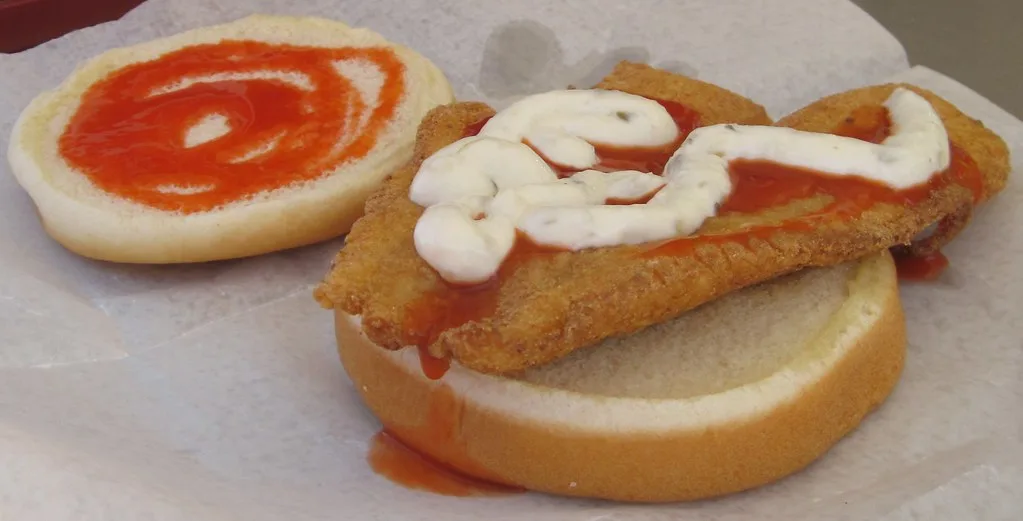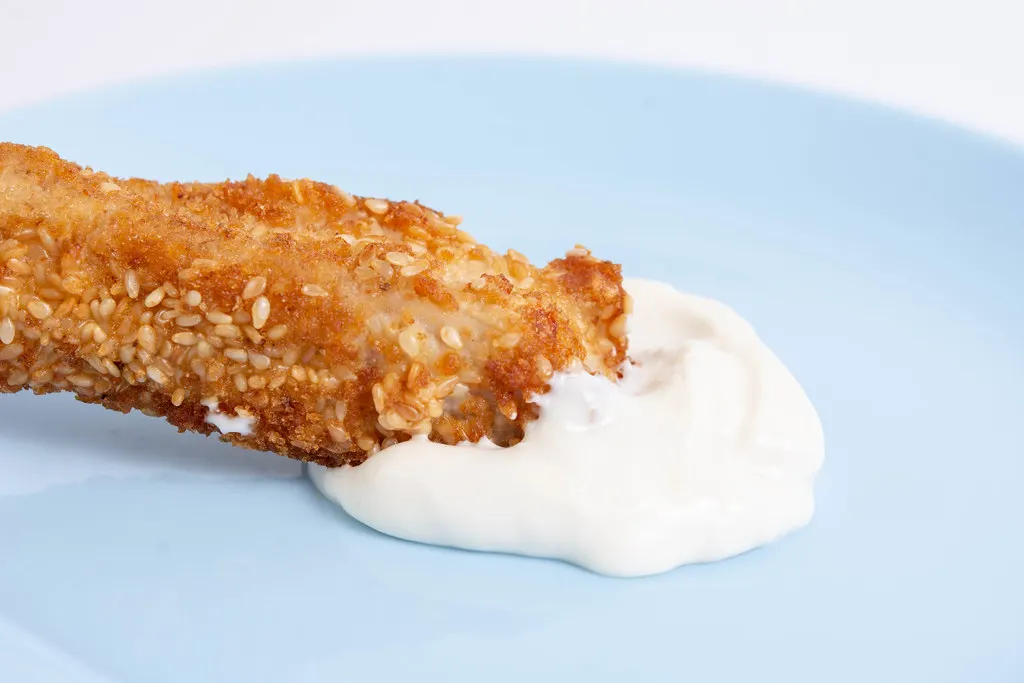In a Nutshell:
- Shelf life: Store-bought tartar sauce lasts for a few months beyond the printed date and for about six months after opening; homemade tartar sauce stays fresh for up to a week.
- Spoilage signs: Discoloration, unpleasant smell, mold growth, or altered taste.
- Storage: Keep store-bought tartar sauce in a cool, dark place; refrigerate after opening. Homemade tartar sauce in an airtight container should always sit in the fridge.
We all know that tartar sauce is the ultimate sidekick for our favorite fried seafood and fish tacos, but how long does this delightful condiment actually last? And how do we tell if tartar sauce has gone bad?
In this article, we’ll explore the shelf life, spoilage signs, and the best storage methods for tartar sauces. So, before you take another dip, let’s make sure you’re all set with the freshest and tastiest tartar sauce experience possible!

How Long Does Tartar Sauce Last?
Unopened tartar sauce typically has a shelf life of about a year and keeps quality for a couple of months beyond the printed date. Once opened, it stays fresh for about six months if you keep it refrigerated.
That’s the high-level overview. Now, let’s dive deeper into this saucy situation!
Unopened
Unopened tartar sauce bottles have a storage time of about a year, which is noticeably less than other condiments such as hot sauce or Worcestershire sauce. That’s a clear indicator that while tartar sauce lasts quite some time, it won’t retain quality for years.
Of course, as long as the bottle is unopened, the condiment will keep quality for a few months past the expiration date.
That means yes, you can eat “expired” tartar sauce as long as it doesn’t show any spoilage signs.
(We’ll cover those later in the article.)
But if your tartar sauce jar or squeeze bottle is already a year past the best-by date, I wouldn’t expect it to be any good in your steak tartare or any seafood dishes.

After Opening
Once you crack open that bottle of tangy goodness, your opened tartar sauce should retain quality for up to 6 months, as long as you refrigerate it and keep it tightly covered.
Obviously, if you’re dealing with expired tartar sauce, expect that period to shrink to a couple of months tops.
(As usual, there’s no way to tell exactly how long yours will keep quality. It’s something you have to assess yourself.)
As you can tell, leftover tartar sauce doesn’t last as long as other popular condiments, such as fish sauce or cocktail sauce.
Homemade Tartar Sauce
Homemade tartar sauce keeps quality for about a week if continuously refrigerated and sealed tightly. And if you want to keep things super safe, use it within 3 to 4 days of whipping it, following the guideline for all perishable leftovers.
Some recipes might suggest it keeps quality for longer. That might often be the case because the homemade variety is typically based on mayonnaise and lemon juice, but why risk it?
Making it from scratch doesn’t take that long, and there’s no need to risk food poisoning.
How to Tell if Tartar Sauce Is Bad?
To quickly determine if tartar sauce is bad, look for discoloration, off odor, mold growth, or an altered taste. If either is there, your tartar sauce is most spoiled.
Now, let’s explore these telltale signs of spoilage in more detail.
Discoloration
The first and most obvious sign that your tartar sauce has gone bad is discoloration. If the once creamy, pale sauce has turned yellow or even brown, it’s time to bid it farewell.
This also holds true for other condiments, like Dijon mustard or horseradish.
Off Odor
When your tartar sauce starts to smell funky, it clearly indicates that it’s time to toss it. A fresh tartar sauce should have a tangy and slightly sweet aroma, not an off odor that makes you think twice about dipping your fish sticks in it.
The same goes for sauces like gochujang or teriyaki sauce – trust your nose!
Mold Growth
If mold appears on the surface of your tartar sauce, it’s definitely time to throw it out. Mold growth is a sure sign of spoilage and can be harmful if consumed.
Just like with other condiments, such as ketchup or barbecue sauce, it’s better to be safe than sorry.

Altered Flavor
The taste of your leftover tartar sauce will change over time. And if your half-opened tartar sauce has been in the fridge for a couple of months already, you might start to notice that.
At this point, it’s up to you whether you use the condiment or open a fresh bottle.
If the flavor change is slight, you can safely use it. But if your tartar sauce is already past its expiration date and tastes pretty bad, it’s time to say goodbye.
With these warning signs in mind, let’s now move on to some changes in tartar sauce that might look concerning but are actually okay.
No Need to Panic: Tartar Sauce Quirks
Sometimes, tartar sauce might undergo changes that can make you think it’s spoiled, but these are just normal quirks that don’t affect its quality.
Separation: Just Give It a Shake
Like salad dressing or ranch dressing, tartar sauce may separate over time, with the liquid rising to the top.
This is totally normal and not a sign of spoilage. Just give your sauce a good shake to mix everything back together, and you’re good to go!
Texture Changes: A Matter of Temperature
If your tartar sauce becomes slightly thicker or thinner, it could be due to temperature changes. As long as there’s no discoloration, off odor, or mold, your sauce is still safe to eat.
Now you know how to tell if your tartar sauce is bad and when to relax if it’s just going through some harmless changes.
Next up, let’s talk about how to store tartar sauce.

Does Tartar Sauce Need to Be Refrigerated?
In short, unopened tartar sauce doesn’t need refrigeration, but opened tartar sauce should be continuously refrigerated to maintain its freshness. Homemade tartar sauce should always sit in the fridge.
Now, let’s explore the nitty-gritty of tartar sauce refrigeration, just like we would with other condiments like oyster sauce or hoisin sauce.
Unopened Tartar Sauce: Cool and Comfy
Unopened tartar sauce, like its base ingredient, mayonnaise, can be safely stored in a cool, dark place, such as a pantry or cupboard. It doesn’t require refrigeration until you crack it open.
So, no need to worry about finding space in your fridge for that new bottle just yet!
Opened Tartar Sauce: Chill Out
Once you’ve opened your tartar sauce, it’s time to give it a nice, cool spot in the fridge. Just like with other condiments, such as mustard or chimichurri sauce, keeping your opened tartar sauce refrigerated helps maintain its quality and extend its shelf life.
Now that we know the ins and outs of tartar sauce refrigeration, let’s discuss the best way to store it so it stays fresh and flavorful.
How to Store Tartar Sauce
Proper storage conditions are key to preserving your tartar sauce.
Keep It Airtight
Whether it’s store-bought or homemade, always store tartar sauce in an airtight container. If it’s store-bought, the original bottle with a tightly covered cap will work just fine.
For the homemade sauce, opt for a jar or container with a tight-fitting lid to keep out air and contaminants.
A Cool and Dark Spot
As mentioned earlier, unopened tartar sauce can be stored in a cool, dark place like a pantry.
Once opened and refrigerated, make sure to place it in a spot away from the refrigerator door, as the temperature there can fluctuate, affecting your sauce’s quality.
Storing Homemade Tartar Sauce
If you’ve made a batch of delicious homemade tartar sauce, be sure to store it in a clean, airtight container, and refrigerate it immediately.
Homemade sauces, just like homemade tomato paste or salad dressing, typically have a shorter shelf life, so proper storage is crucial.

